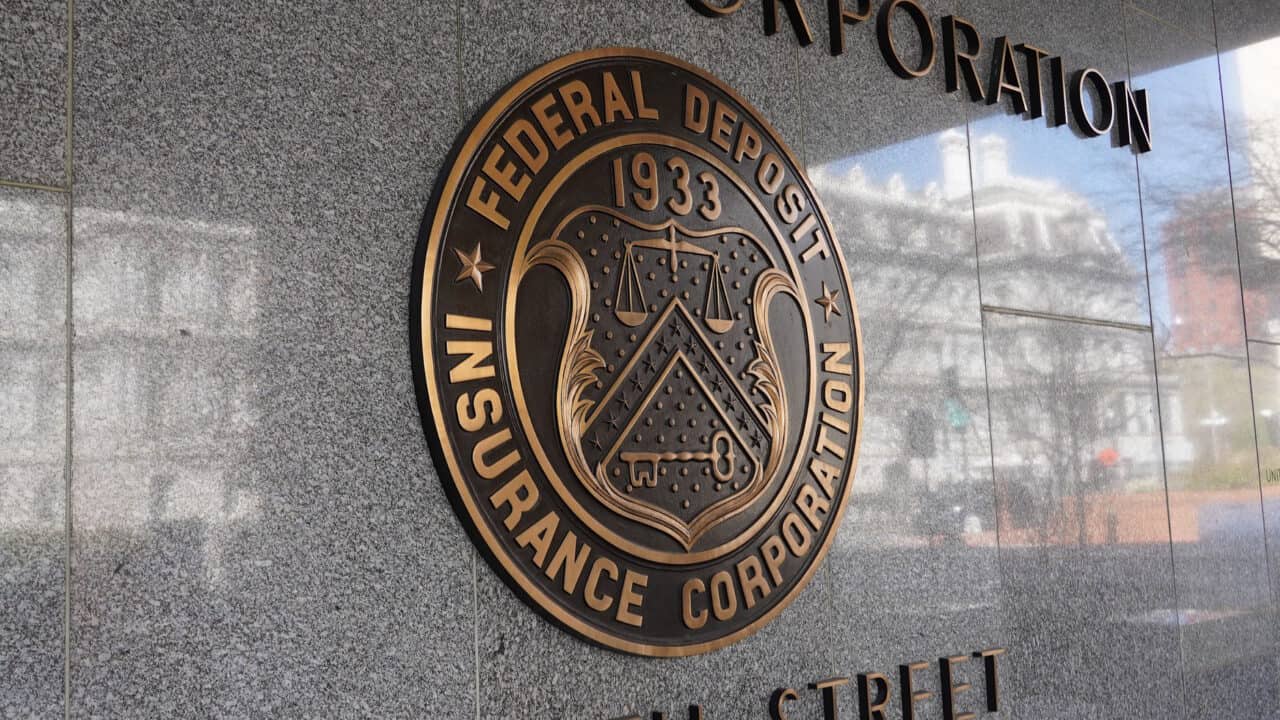 "FDIC Logo (Nikhilesh De/CoinDesk)" by CoinDesk is licensed under CC BY 2.0
https://www.coindesk.com/
"FDIC Logo (Nikhilesh De/CoinDesk)" by CoinDesk is licensed under CC BY 2.0
https://www.coindesk.com/
Today, Americans for Tax Reform and The James Madison Institute published a white paper discussing the legislative landscape for federal deposit insurance. The paper explains why the Federal Deposit Insurance Corporation’s (FDIC) May 2023 report on deposit insurance reforms contains flawed proposals. The paper also analyzes congressional legislation and explains why raising the $250,000 deposit insurance limit exacerbates moral hazard, perpetuates bank instability, and ultimately raises costs for taxpayers. The paper ends by providing free market policy reforms that would mitigate moral hazard, ensure depositors are covered, and prevent the federal government from turning banks into de facto nationalized entities. The free-market reforms include deregulating non-brokered reciprocal deposits. You can read the full paper here.
Below is the executive summary of the paper:
On May 1, 2023, the Federal Deposit Insurance Corporation (FDIC) published a paper outlining potential policy proposals to amend the current structure for federal deposit insurance coverage.[1] The report was released in the wake of the failures of Silicon Valley Bank (SVB), Signature Bank (Signature), and First Republic Bank (FRB).
Under current law, the federal deposit insurance limit—or the standard maximum deposit insurance amount (SMDIA)—is $250,000 per depositor, per bank, per ownership category—as administered by the FDIC.[2] For credit unions, the standard maximum share insurance amount (SMSIA) is $250,000 per share owner, per insured credit union, for each account ownership category—as administered by the National Credit Union Administration (NCUA).[3]
The FDIC’s report offers three proposals for alternative deposit insurance coverage: “Limited Coverage,” “Unlimited Coverage,” and “Targeted Coverage.” All the options provided by the FDIC involve different degrees of increasing the threshold for federal deposit insurance. The FDIC’s preferred option is to offer a new program of “targeted” deposit insurance coverage for business payment accounts while simultaneously requiring more regulation. The concept of increasing bank regulation along with deposit insurance coverage is mainly promoted by Democrats, such as Sen. Elizabeth Warren (D-Mass.).[4]
The FDIC’s proposals would further entrench the federal government’s foothold in the banking sector, restrict businesses and households’ access to capital, significantly increase fees banks would have to pay into the Deposit Insurance Fund (DIF), enervate economic growth, exacerbate moral hazard,[5] and fail to fully stymie financial instability.
The growth of uninsured deposits is a product of quantitative easing and over a decade of the Federal Reserve’s (Fed) easy monetary policy that essentially created an artificial bubble of free financing.[6] Near-zero interest rates[7] also made it harder for banks to find higher returns in which to invest their deposits. As a result, banks, such as SVB, invested in long-dated Treasury bonds and mortgage-backed securities under the expectation that rates would be kept perpetually low and bond prices would not drop dramatically. SVB “held tens of billions of dollars in long-term government bonds” even when the Fed started to raise interest rates at an aggressive pace.[8] Deposit insurance allows banks to take these risks “because they can capture any profits but shift any losses to the government.”[9] This is exactly what happened when the government assumed the risk for all depositors by invoking the “systemic risk exception.”[10] Subsequently, the FDIC issued a “special assessment,” or fee, on U.S. banks to recover the losses to the DIF for covering all uninsured deposits at SVB and Signature.[11] The FDIC estimates that 114 banking organizations, including some community banks with between $5 billion to $10 billion in assets, will have to pay a special fee to cover the losses.[12] The regulators are setting a dangerous precedent by generating moral hazard through their rescue of uninsured deposits.
Increasing the deposit insurance limit will allow bank managers to make riskier investments with deposits, knowing full-well that if the bank cannot meet a surge in deposit withdrawals and the bank goes under, the regulators will be there to support uninsured depositors.
Members of Congress have introduced legislation to increase the deposit insurance limit for banks and credit unions. This paper starts by analyzing the FDIC’s proposal and then identifies and analyzes congressional legislation—pointing out their strengths and weaknesses. Ultimately, all the bills described in this paper are in the same vein—they raise the level of federal deposit insurance coverage, which will worsen moral hazard and cost American taxpayers more money down the road. The paper ends by offering free market alternative solutions that lawmakers can pursue, such as deregulating reciprocal deposits and enhancing accounting transparency for held-to-maturity (HTM) securities.
[1] https://www.fdic.gov/analysis/options-deposit-insurance-reforms/report/options-deposit-insurance-reform-full.pdf.
[2] https://www.fdic.gov/regulations/resources/brochures/deposit_insurance_at_a_glance-english.html.
[3] https://ncua.gov/files/publications/guides-manuals/NCUAHowYourAcctInsured.pdf.
[4] https://www.bloomberg.com/news/articles/2023-03-21/warren-seeks-to-tie-higher-fdic-insurance-to-tighter-regulation.
[5] https://fortune.com/2023/03/21/what-is-moral-hazard-insurance-banking-risk-financial-recklessness/.
[6] https://www.chicagobooth.edu/review/did-fed-contribute-svbs-collapse.
[7] https://fred.stlouisfed.org/series/FEDFUNDS.
[8] https://www.wsj.com/articles/how-svb-profited-from-interest-rate-risk-accounting-rules-deposit-fdic-federal-reserve-coupon-held-to-maturity-ec43418a.
[9] https://www.imf.org/external/np/seminars/eng/2006/mfl/pam.pdf.
[10] https://www.occ.gov/news-issuances/news-releases/2023/nr-occ-2023-43a.pdf.
[11] https://www.fdic.gov/news/press-releases/2023/pr23092.html.
[12] https://www.fdic.gov/news/fact-sheets/special-assessment-final-rule-11-07-23.html.

